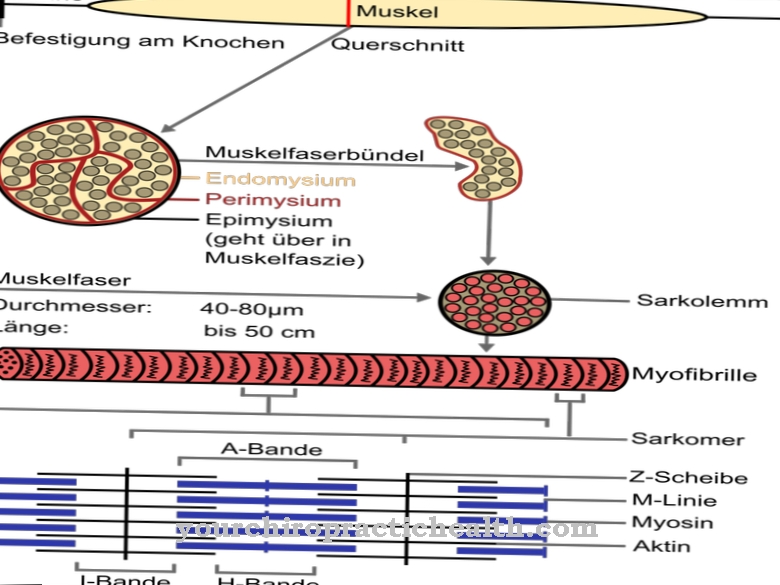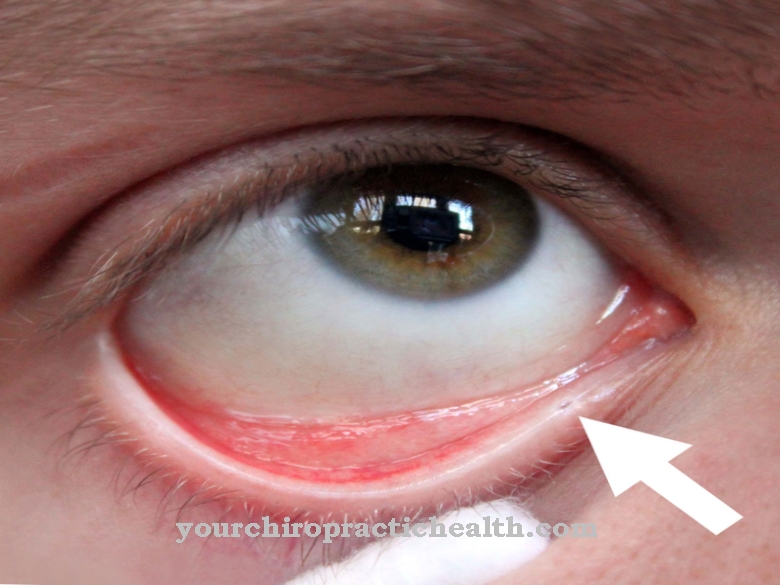Vimentin is an intermediate filament that consists of protein and strengthens the cell skeleton. It is also found in the plasma of certain cells, such as smooth muscle cells and endothelial cells. Since soft tissue tumors produce more vimentin, medicine also uses it as a marker for new growths.
What is vimentin?
Vimentin is one of the intermediate filaments (Filamenta intermedialia) that occurs in the cytoskeleton and also exists in the plasma of certain cells. Intermediate filaments are small structures that contribute to the stability of the cells.
There are other types of them besides vimentin; they can be grouped into five types - vimentin belongs to type III, to which desmin, peripherin and glial filament protein (GFAP) also belong. Vimentin seems to have a high functional similarity to desmin in particular. It is possible that desmin can take over the role of desmin in the early development phases if the organism does not form this protein structure due to a genetic defect. To what extent these results, which researchers obtained in animal experiments, can be transferred to humans, has not yet been conclusively clarified.
Mice that lack the vimentin gene show only minor physiological abnormalities, for example in the form of incorrect alignment of the muscle fibers. Overall, there is still a lot of research to be done around the biomolecule. Vimentin is not only found in the human body, but also in all other vertebrates.
Anatomy & structure
A single vimentin particle consists of 465 amino acids. In its primary structure, the amino acids are strung together as a long chain, with peptide bonds acting as a link between two building blocks.
The sequence depends on the specifications that are specified in the DNA; the genes that code for vimentin are found on the tenth chromosome in humans. In the human body, however, Vimentin is not in its final form as a one-dimensional chain. Therefore, the macromolecule then folds and gradually takes on a spatial structure. The shape depends on the physical properties of the amino acids used, which only differ from one another with regard to their residual group and otherwise follow the same structure.
In the secondary structure, the amino acid chain folds and solidifies with the help of hydrogen bonds, whereby enzymes can support the process. Vimentin takes on the form of an α-helix, which is stabilized in its tertiary structure by additional bonds between the residues of the amino acids. A stretched section remains at the head and tail ends of the particle. Only in its perfect spatial shape does the protein structure have its characteristic properties, which also include specific interactions with other molecules. Vimentin is a dimer because a finished molecule is composed of two similar subunits.
Function & tasks
Intermediate filaments like vimentin strengthen the cell skeleton and the shape of the cell as a whole and in this way contribute to the stability of the cell. The cell skeleton or cytoskeleton is an adaptable structure and can expand, restructure or break down into certain areas of the cell as required. This flexibility allows the cell skeleton to support movements of the entire cell.
In addition, the structure serves as a transport route; Like the endoplasmic reticulum, the cell skeleton thus contributes to the distribution of substances within the cell. In addition to intermediate filaments, the cell skeleton has two other important components that it depends on as a building material. These are tubular T-tubules on the one hand and actin filaments on the other.
Vimentin can also be found in the plasma of certain cells. These include, for example, the smooth muscle cells. Smooth muscle surrounds organs and occurs as a contractile unit in the walls of blood vessels. Vimentin, together with desmin, stabilizes the fibrils of the muscle fibers, which primarily consist of actin and myosin - these are also found in the striated muscles.
Endothelial cells are another example of vimentin carriers. They envelop the interior of the hollow organs of the lymphatic system and the blood vessels. Both cell types arise from the mesenchyme, i.e. from the embryonic connective tissue. Another function of vimentin is to protect the cell nucleus, the endoplasmic reticulum and mitochondria from mechanical overload.
You can find your medication here
➔ Medicines for muscle weaknessDiseases
Medicine uses vimentin as a marker to identify certain tumors that produce more vimentin than other tissues. Elevated levels can indicate new growth in soft tissue, which includes muscle, connective and adipose tissue.
Sarcomas can occur in these areas. These are malignant neoplasms that grow from mesenchymal cells and not only represent soft tissue sarcomas, but can also affect bones or cartilage. Sarcomas can be divided into numerous sub-forms: If, for example, it grows out of smooth muscles, it is a leiomyosarcoma, which can mainly spread through the blood in the body. In contrast, fibrosarcoma arises from connective tissue and rarely occurs, while liposarcoma originates in adipose tissue.
One fifth of all malignant soft tissue tumors are liposarcomas; they arise particularly often in the retroperitoneal space, which lies between the posterior abdominal wall and part of the ´abdominal membrane (the parietal peritoneum), as well as on the back and thigh.
In principle, surgical removal, radiation therapy and / or chemotherapy are possible treatment options, all of which aim at destroying the tumor. However, depending on the location, individual risks and type of neoplasm, not all treatment options are indicated in every case. Even with successful treatment, doctors recommend regular follow-up examinations in order to detect new outbreaks at an early stage.



























